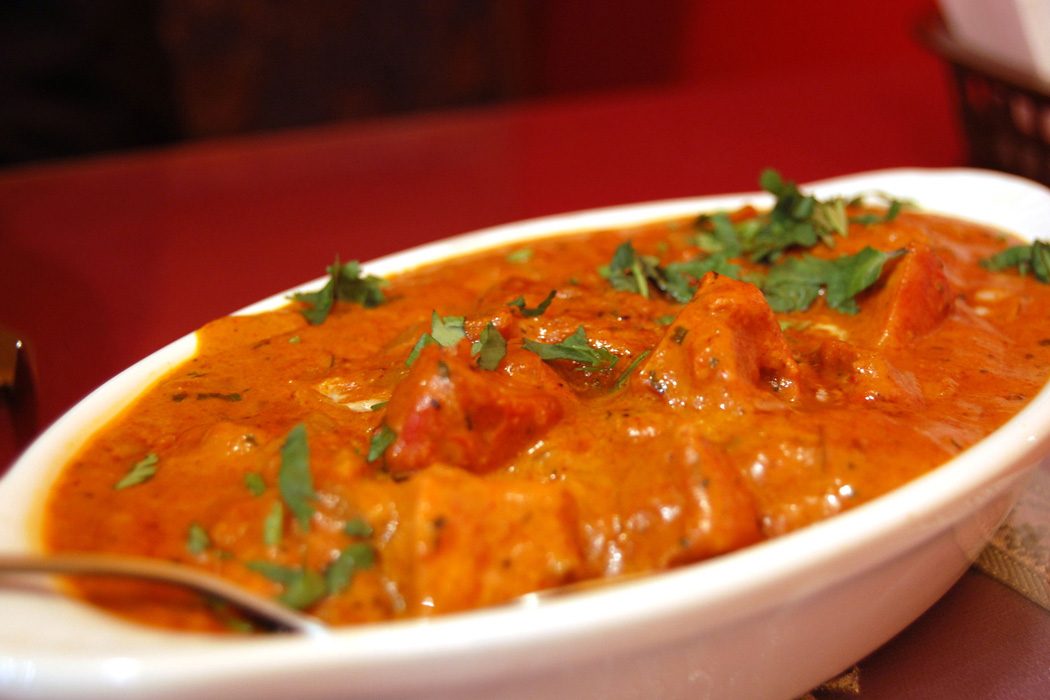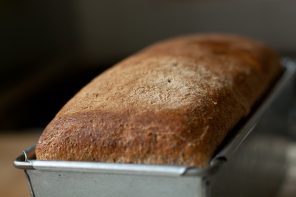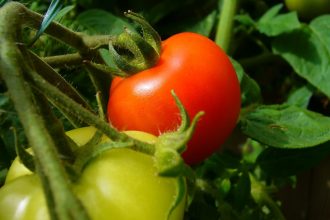Editor’s note: Each Thursday, we feature a throwback piece from Topology’s predecessor, catapult magazine. In this essay from 2008, Deborah Leiter shares about learning to cook a dish from her boyfriend’s native East Africa.
I have long had a taste for food from all over the world, and the fact that my boyfriend’s originally from East Africa (Kenya, to be precise) has only increased my taste for international flavors. So last fall I was trying hard to perfect this fabulous Ethiopian stew recipe I found called chicken wat. When I mentioned this process to those living around me, I got a variety of responses from those who’d never eaten Ethiopian food. “I didn’t know they had food in Ethiopia,” some would jokingly say. Other, more thoughtful ones would say, “You don’t always think of places like Ethiopia and cuisine together.” I often responded by inviting them over to share the dish with me, hoping that they would be able to learn a bit more about East Africa’s culture by experiencing its spicy flavors.
Over the years my own encounters with the very tasty, yet filling, food from other cultures, especially from those we in North America call developing nations, have been positive. I have gradually felt myself become more humble toward other kinds of food and the cultures from which they spring. By cooking dishes from around the world, I’ve learned, for starters, that delicious food is a part of the culturally and economically diverse realities of continents far from our own. Beyond this, I’ve also discovered I can learn a lot from these cooks about how to cook excellent food economically. For example, I’ve learned a lot about using spices first for flavor, sugar and fat second. I’ve learned how to stretch costly meat by spreading it among vegetables and complex starches in stews and soups.
The steadiest companion in this journey for me has been a cookbook from the Mennonites called Extending the Table, a cookbook full of authentic recipes from all over the world. Now that I’m in grad school, I’m more thankful than ever for these lessons and am starting to find parts of my own cultural cuisine, such as soup, that I can apply those lessons to. After all, however much I as an American love African food, I also have other kinds of food—and local ingredients—I want to include in my diet along with the delightful chicken wat. Armed with lessons in flavor from cultures around the world, I’m able to make healthier choices while cooking more “authentically American” food as well.
These distinctions I find myself making about “authentic” cuisine remind me of the thoughtful portrayal of these complexities by Anne Tyler in her novel Digging for America. In one part of the story, a main character—the matriarch of an Iranian-American family—visits a relative who has married a white American, and is offended at how blithely (and, she feels, awkwardly) the American husband has “taken over” Iranian food and terminology. The matriarch feels it is rude, but her relative’s perspective is that her husband is approaching her cultural background with love and respect.
These questions of cultural identity and how we approach other cultures are indeed complicated. I can’t come to another’s culture without wearing the glasses of my own cultural position and perspective. This means there’s a danger in my cooking chicken wat—in my desire to learn another culture’s food, I could become a “food imperialist.” After all, developing countries’ cuisine emerges out of necessity as well out of delight. The very fact that some of the ingredients for Ethiopian food aren’t grown locally in North America, yet are available to me, is a factor that takes me out of the food’s original frame of reference at best, potentially implicating me at worst. And my take on Eastern African cuisine will always be a non-native one.
And yet as long as I’m bringing a perspective (and its baggage) with me I might as well admit that position’s strengths as well as its weaknesses. While I seek to find balance between local and global ingredients, it’s pointless to deny that I have a wealth of choices before me when it comes to food, and that I have been shaped by that position as well as by my own heritage’s approach to food. And I’m actually deeply thankful to live in a place in which I have been given the materials to explore other cultures through their food. “Taste and see,” we Christians are told at communion—that directive holds in our relationships to our global neighbors as well as in our relationship with God. Sometimes literally tasting is a necessary part of the process, a step toward seeing, and I’m not sure how to get around that step at times, even while I see the difficulties inherent in globalization practices.
I don’t know what the answer is to these complex tensions, but I’m gradually starting to understand how important it is to bring an awareness of them to my international cooking experiments. I do know that as a blond-haired, light-skinned American of Dutch/English/German/Swiss/Scottish heritage, nothing would be able to make me natively East African. And even if it were possible, cooking chicken wat isn’t enough on its own to make me truly appreciate and understand a culture that’s so different from my own. Tasting can be a step toward seeing, but being truly Christlike in an approach to foods and the cultures out of which they arise is a bigger effort than cooking a few dishes now and then from my copy of Extending the Table. And so, while I’ll continue cooking chicken wat and other such dishes, I’m glad that my food experiments are being joined with other opportunities in my life to understand East African people and their cultures. I’m looking forward to tasting and seeing where God will take me next.
Chicken Wat (Ethiopia)
Note: It looks like this stew has a lot of ingredients, but most of them are spices. The original recipe is from Extending the Table (see below), but I’ve added my own substitutions and twists. The stew is very spicy, so, if you’re not used to lots of spicy heat, lessen the spices (particularly the cayenne pepper) and make sure you use the sweet Hungarian variety of paprika. The vegetables I add seem to absorb the spice more than the chicken does, so be prepared for that as well. The stew is good over rice, alongside a white cornmeal concoction from Kenya called ugali, or with African or Indian flat breads (injera and chapatis, respectively). The recipes for all of these accompaniments can be found in Extending the Table.
Remove skin from:
- 2 1/2-3 lb. chicken pieces (1.3-1.5 kg) (you can use less than this if you use boneless chicken and/or add vegetables)
Sprinkle with:
- 2 T. lemon juice (30 ml)
- 1 t. salt (5 ml)
Let stand while preparing other ingredients. In large saucepan, melt:
- 2 T. margarine or butter (30 ml)
Add, cover, and cook on low heat until onions are soft, but not browned:
- 2 c. onions, finely chopped (500 ml)
- 1 T. garlic, minced (15 ml)
- 1 t. ginger root, grated (5 ml), or 1/2 t. ground ginger (2 ml)
Add:
- 1/4 t. fenugreek, crushed (1 ml)
- 1/4 t. ground cardamom (1 ml)
- 1/8 t. ground nutmeg (.5 ml)
- 2 T. paprika
Stir well and add 1/4 cup Berbere, a spice mixture made up—in the simplest formulation—of the following:
- 1 t. ground ginger (5 ml)
- 3 T. ground red pepper (45 ml) (HOT—you can lessen this or substitute quite a bit for sweet paprika if you don’t like as much heat)
- 1/4 t. ground cloves
- 1/2 t. ground cinnamon
Stir over low heat 2-3 minutes. Pour in:
- 1/2 c. water (125 ml)
Bring to a boil over high heat, stirring continuously. Add chicken to sauce, turning pieces until all are coated. At this point you can also add any vegetables you would like. I often use:
- Potatoes, chopped
- Peas
- Green beans
- Corn
- Etc.
Reduce heat to medium low, cover, and simmer until chicken is tender, about 45 minutes, turning once or twice to coat chicken evenly. When it becomes too dry, add a little water. Sauce should be the consistency of heavy cream.
Prepare (this step is optional):
- 1 egg, hard-boiled, for each person
Peel hard-boiled eggs. Cut shallow slits in eggs to allow color and flavor of sauce to permeate. Add eggs to sauce and simmer 10 minutes. Stew can be made a day ahead of time and refrigerated, adding the eggs when reheating, but be aware that the stew gets spicier the longer it sits.
Adapted from Extending the Table…A World Community Cookbook by Joetta Handrich Schlabach. Original recipe authors: Charmayne Denlinger Brubaker and Phyllis Horst Nofziger.
Image by The Mighty Quill (CC BY-SA 2.0).





